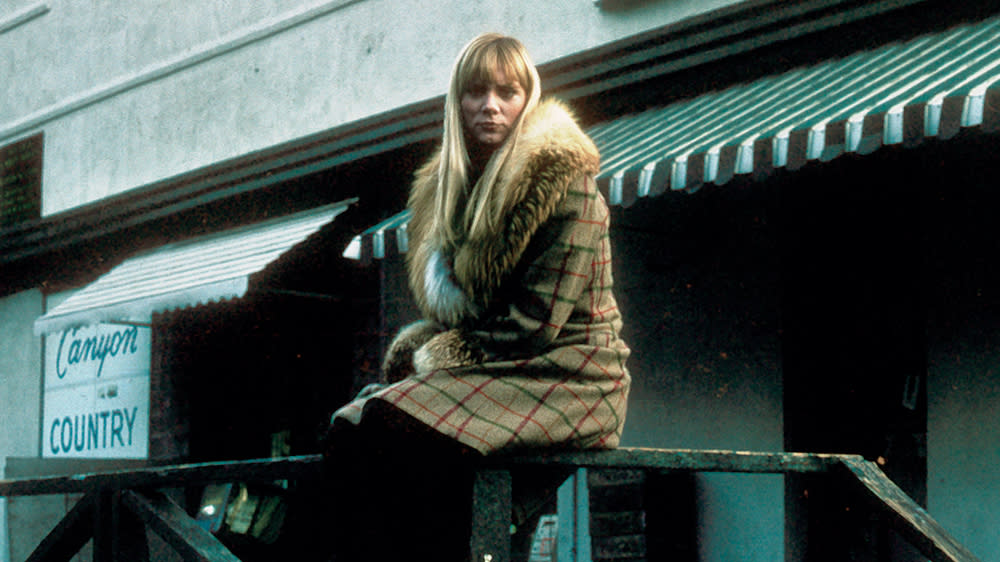Singer-Songwriter Jackie DeShannon Remembers the Late-1950s L.A. Music Scene

Click here to read the full article.
Last year’s anthology album release of singer-songwriter Jackie DeShannon’s early 1970s Capitol Records masters, “Stone Cold Soul,” was a potent reminder of her impressive vocal chops, which are somewhat eclipsed in the public memory by her powerful songwriting prowess.
After penning a string of indelible ’60s hits such as Brenda Lee’s “Dum Dum,” “When You Walk in the Room” for the Searchers, “Don’t Doubt Yourself, Babe” for the Byrds and “Come and Stay With Me” for Marianne Faithfull, DeShannon had her own mega-hit with her composition (with Randy Myers and Jimmy Holiday), “Put a Little Love in Your Heart.”
That record, along with her version of the Burt Bacharach-Hal David classic, “What the World Needs Now Is Love,” put DeShannon at the center of the ’60s pop music scene. In 1982, DeShannon wrote (with Donna Weiss) the blockbuster hit “Bette Davis Eyes,” which earned Grammys for both Song of the Year and Record of the Year.
Inducted into the Songwriters Hall of Fame in 2010, DeShannon’s first mention in Variety was in 1957, when she was an up-and-coming rock and roll vocalist Jackie Dee, and her Gone Records release, “I’ll Be True,” garnered an upbeat Variety review.
As a performer, you’re associated with the ’60s, not the ’50s. But “I’ll Be True” in 1957 wasn’t even your first record.
I was living in Illinois and while I was still in high school, I signed with Gone Records. I did whatever I could to advance my career. I was on a local radio show, and I did “record hops,” sometimes I’d perform on stage in a local movie theater before the movie played.
What finally moved the needle for you and got you on the road to becoming a national recording act?
I was on a local record hop and Eddie Cochran was performing. He heard me sing and told me, “You need to come out to California. You’ll really make your mark there.”
It sounds like you were ambitious.
I was always extremely determined. When I was 3 years old, my parents took me to see Tex Ritter and I got up on stage and sang with him. When I was 4, I was singing on gospel radio shows. They’d put me on a box so I could reach the microphone.
Rock and roll was really breaking out at the time. Who were you listening to?
I used to listen to WLAC radio station out of Nashville. They had a midnight show where they played what were called “race” records. I loved Jimmy Reed, the Chantels and I see that music as the foundation of everything I’ve done. It was all on the shoulders of the blues artists on WLAC, the ones who did the original versions of the songs, not the records by the white artists that covered them.
But your own music was very strongly in the tradition of rockabilly and folk.
Buddy Holly had a little of all of it and he brought it all together, country and blues. And before I worked with the Everly Brothers on shows, I saw them perform back in the very beginning They had great songs, incredible presence, the amazing harmonies.
What did you find when you arrived in Los Angeles?
I found myself surrounded by musicians who brought the same influences. Don Peake, Leon Russell, James Burton, Glen Campbell, Mike Post. Many of the guys were from the South, but those guys could play ANYTHING. I walked into the studio one day and heard Tommy Tedesco playing Andre Segovia. It was all a wonderful blend and producers Dick Glasser and Jack Nitzsche were able to bring so much of it together.
There were very few female artists with control over their careers at that time. A decade later it was common, but not in the early ’60s. Was that a problem?
The worst thing about that time was that I was not able to realize my vision. A woman at that time couldn’t go into the studio and be in control of their sessions. Even Carole King benefitted from having a male songwriting partner. And I didn’t have a producer like John Hammond or George Martin.
What kinds of songs or projects were your trying to do?
I remember I was invited by Peter, Paul and Mary to see Bob Dylan at his first concert appearance in New York. I instantly knew how important he would be and came back to L.A. and tried to convince the label to let me cut an album of his songs. It would have been the first. But no one understood and no one listened.
And you toured with the Beatles on their first U.S. tour. I’m sure it was pretty clear where they were headed.
The first time I met Paul McCartney, he said, “We know who you are. We’ve heard all your song demos.”
Best of Variety
Sign up for Variety’s Newsletter. For the latest news, follow us on Facebook, Twitter, and Instagram.

